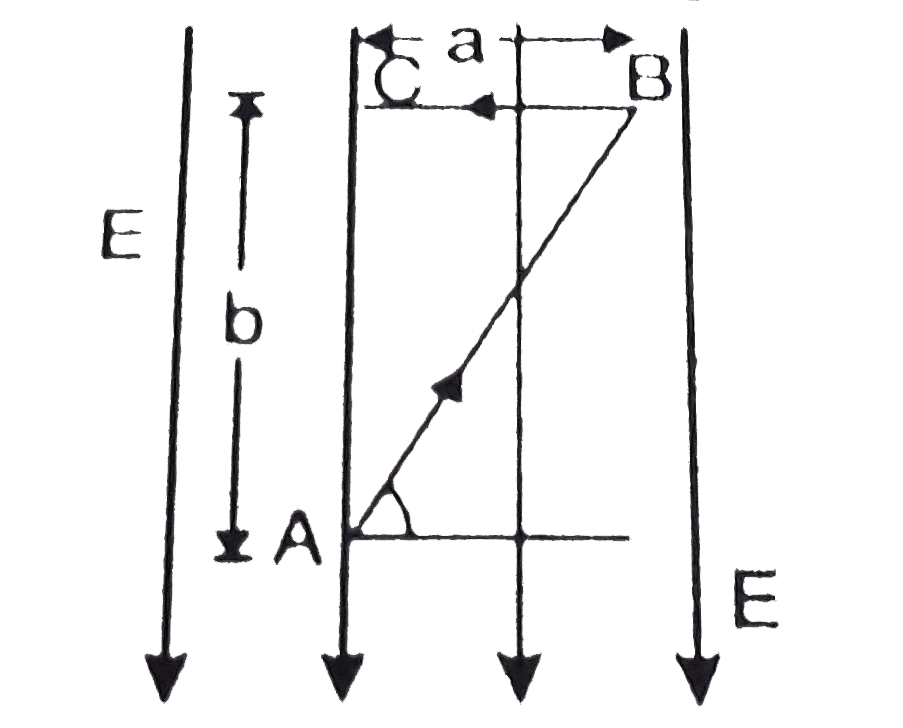STATEMENT-1 : Absolute value of potential is not defined.
STATEMENT-2 : For a given potential function, electric intensity function can be uniquely found.
STATEMENT- 3 : Potential increases in the direction of electric field
F F T
T T F
T F T
F T F
The correct Answer is:B
To analyze the statements provided in the question, we will evaluate each statement one by one and determine their validity based on the principles of electrostatics.
Step 1: Evaluate Statement 1
Statement 1: Absolute value of potential is not defined.
Explanation:
In electrostatics, the electric potential (V) is defined relative to a reference point, commonly taken to be at infinity where the potential is considered to be zero (V = 0 at infinity). The absolute value of electric potential at a point does not have a physical meaning because it is always defined relative to another point. Hence, we can only talk about potential differences (ΔV = V_B - V_A) between two points. Therefore, this statement is True.
Step 2: Evaluate Statement 2
Statement 2: For a given potential function, electric intensity function can be uniquely found.
Explanation:
The electric field intensity (E) is related to the electric potential (V) by the relation E=−dVdr. Given a potential function, we can differentiate it to find the electric field. This relationship shows that for any potential function, there is a unique electric field associated with it. Therefore, this statement is True.
Step 3: Evaluate Statement 3
Statement 3: Potential increases in the direction of electric field.
Explanation:
The electric field points in the direction of decreasing potential. For a positive charge, as you move away from it, the potential decreases. Therefore, the potential does not increase in the direction of the electric field; it actually decreases. Hence, this statement is False.
Summary of Statements:
- Statement 1: True
- Statement 2: True
- Statement 3: False
Thus, the overall evaluation of the statements is TTF (True, True, False).
Final Answer:
The correct option is Option 2: TTF.
---
Statement 1: Absolute value of potential is not defined.
In electrostatics, the electric potential (V) is defined relative to a reference point, commonly taken to be at infinity where the potential is considered to be zero (V = 0 at infinity). The absolute value of electric potential at a point does not have a physical meaning because it is always defined relative to another point. Hence, we can only talk about potential differences (ΔV = V_B - V_A) between two points. Therefore, this statement is True.
Statement 2: For a given potential function, electric intensity function can be uniquely found.
The electric field intensity (E) is related to the electric potential (V) by the relation E=−dVdr. Given a potential function, we can differentiate it to find the electric field. This relationship shows that for any potential function, there is a unique electric field associated with it. Therefore, this statement is True.
Statement 3: Potential increases in the direction of electric field.
The electric field points in the direction of decreasing potential. For a positive charge, as you move away from it, the potential decreases. Therefore, the potential does not increase in the direction of the electric field; it actually decreases. Hence, this statement is False.
- Statement 1: True
- Statement 2: True
- Statement 3: False
The correct option is Option 2: TTF.
Topper's Solved these Questions
- ELECTROSTATIC POTENTIAL AND CAPACITANCE Book:AAKASH INSTITUTEChapter:ELECTROSTATIC POTENTIAL AND CAPACITANCE Exercise:SECTION-I Subjective Type Questions
Explore 5 Videos
- ELECTROSTATIC POTENTIAL AND CAPACITANCE Book:AAKASH INSTITUTEChapter:ELECTROSTATIC POTENTIAL AND CAPACITANCE Exercise:SECTION-J Aakash Challengers Questions
Explore 5 Videos
- ELECTROSTATIC POTENTIAL AND CAPACITANCE Book:AAKASH INSTITUTEChapter:ELECTROSTATIC POTENTIAL AND CAPACITANCE Exercise:SECTION-G(INTEGER ANSWER TYPE QUESTIONS)
Explore 8 Videos
- ELECTROMAGNETIC WAVESBook:AAKASH INSTITUTEChapter:ELECTROMAGNETIC WAVESExercise:ASSIGNMENT SECTION - D Assertion-Reason Type Questions
Explore 25 Videos
- GRAVITATION Book:AAKASH INSTITUTEChapter:GRAVITATION Exercise:ASSIGNMENT SECTION - D (ASSERTION-REASON TYPE QUESTIONS)
Explore 16 Videos
Similar Questions
Knowledge Check
In the following question a statement of assertion (A) is followed by a statement of reason (R )
A: For a given potential function, electric intensity function can be uniquely derived.
R : For a given electric intensity function, electric potential function can be uniquely derived.AIf both Assertion & Reason are true and the reason is the correct explanation of the assertion , then mark (1).BIf both Assertion & Reason are true but the reason is not correct explanation of the assertion then mark (2)CIf Assertion is true statement but Reason is false, then mark (3)DIf both Assertion and Reason are false statements , then mark (4).The potential difference points a and B in the given uniform electric field is :
 AEaBE√(q2+b2)CEbD(Eb/√2)
AEaBE√(q2+b2)CEbD(Eb/√2)STATEMENT-1 : At a point electrostatic field is zero, then potential at that point may be zero .
and
STATEMENT-2 : Negative of the potential gradient is equal to electrostatic field.AStatement-1 is True, Statement-2 is True, Statement-2 is a correct explanation for Statement-1BStatement-1 is True, Statement-2 is True, Statement-2 is NOT a correct explanation for Statement-1CStatement-1 is True, Statement-2 is FalseDStatement-1 is False , Statement-2 is True
In the following question a statement of assertion (A) is followed by a statement of reason (R )
A : An equipotential surface is normal to electric field lines.
R : Potential increases in direction of electric field .
View SolutionElectric intensity is directed along the direction at which electric potential
View SolutionElectric field inside a conductor can be zero only, if potential inside the onductor is
View SolutionStatement - I : If a charge enters in electric field then it moves in the direction of →E
Statement - II : Force on charge is in the direction of field.
View SolutionSTATEMENT -1: The potential decreases in the direction of the electric field .
STATEMENT -2: the external charge from higher to lower potential .
View Solution

